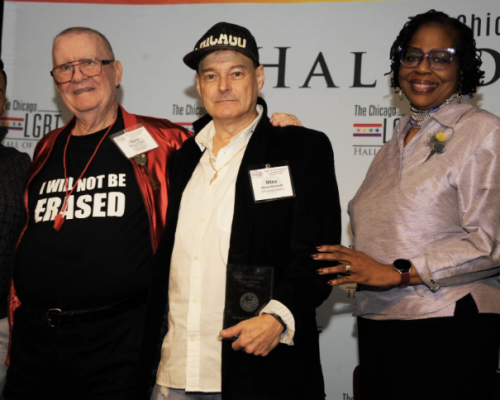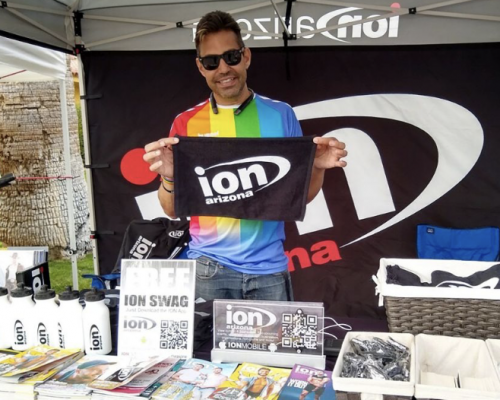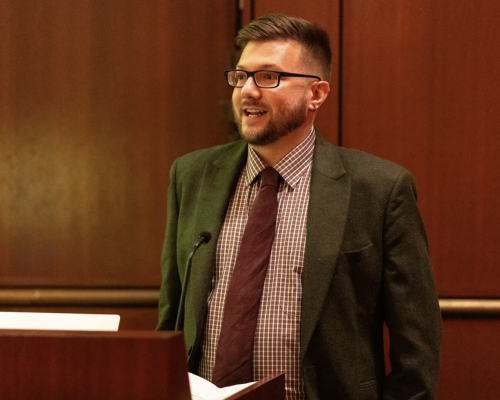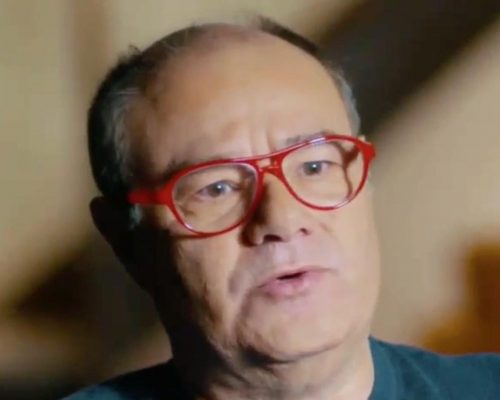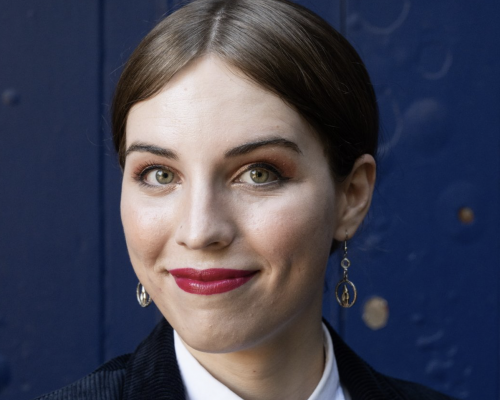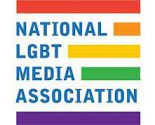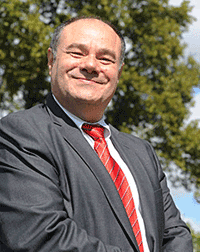
PGN publisher, editors reflect as newspaper turns 45
by Mark Segal, Al Patrick, Sarah Blazucki, Jen Colletta and Jess Bryant
(The following pieces were published in the April 21, 2021, issue of Philadelphia Gay News as the newspaper celebrated its 45th anniversary. They are reprinted here with permission.)
Mark Segal (Founder and Publisher, 1976 to Present)

Who would imagine that starting a newspaper for the LGBT community would put you on the KKK hit list? That was only the beginning for PGN.
Next came the break-in and trashing of our offices, ripping out wiring, destroying the plumbing. Vending boxes destroyed or glued shut. Then there was a court injunction threatened by Keystone Blue Cross. The refusal of journalism organizations to allow us to be members.
None of this frightened us off. It actually made our resolve stronger. It was a fight among those who didn’t want us to exist, those who looked down on us, or those who simply wrote us off.
Forty-five years later, PGN is the most award-winning LGBT media outlet in the nation. Each of those organizations that had denied us membership in the past have all honored us with awards. We’ve been named best in the nation among weeklies, not just LGBT weeklies, but all weekly newspapers. That goes as well for Pennsylvania.
While it makes me proud to be at the top of our field, my hope is that our readers appreciate what we actually take pride in, our journalism.
Fifteen years ago, we reported on a mysterious death of a black trans woman, and we never stopped investigating. Tim Cwiek’s decades-long and still ongoing investigation was pioneering even for LGBT media back then. Victoria Brownworth’s breakthrough article on lesbian nuns made her the expert in the field. Having our reporters sleep in a park with homeless LGBT youth was a first.
The LGBT history project spearheaded by PGN enabled us to make real change in American history and solidify the place LGBT people have in it.
Our interviews with presidents and governors have helped make LGBT issues part of campaigns and governance. Our journalism made changes in the battle for LGBT people in the military, marriage equality, the fight against HIV/AIDS, dignity for our seniors, and understanding the obstacles our LGBT youth deal with everyday.
There were times we made mistakes, but in 45 years that should be expected, and we’ve learned from those missteps and used them to become better.
So what has created this crusading newspaper? I give that credit to my grandmother who took me to my first civil rights demonstration when I was 13, to that infamous night in June 1969 at Stonewall and the group that formed from the ashes of Stonewall, the Gay Liberation Front. That fire for equality still shines bright in these pages each week.
We started this newspaper when I was 25, Now at 70, the passion for what we do is still growing. And I’m lucky enough to thank the PGN family each week for making me a proud publisher.
Al Patrick (Editor, 1993 to 1996)
It feels like PGN has always been there. Like cheesesteaks and soft pretzels, it has been part of the Philly landscape for nearly a half century now. Gay or straight. Friend or foe. PGN is a part of Philly that you just can’t ignore.
When I first worked at PGN, I was surprised to find out that not only was I expected to actually write and report, but on Thursday mornings I was expected to help unload the papers into the office where they would begin their journey to every neighborhood in Philadelphia as well as around the country to nearly all 50 states. I imagined that just the physical presence of that paper in some of those places, the actual word “gay” in its title, must have been enough to shock when it landed. For many that word was not even allowed to be printed in their town’s local newspapers.
Other more objective or qualified journalists can debate this paper’s impact. But what I do know is before the age of Google, PGN was a must-read for many major newsrooms around the country. Its physical presence was used as a sort of guide to the gay world, a world that many journalists could not decipher on their own. The editorial page editor at the New York Times once told me the staff had been buying a weekly copy for years and keeping it on the paper stack in the main NYT newsroom. It was read and discussed by top editors and reporters at their daily editorial meeting on Friday mornings when it hit the streets.
Its physical presence for me as a kid was manifested in the boxes on street corners selling PGN. It felt like an act of courage on my part to just walk or drive by one with my family. No one ever said a word about them, but I saw them and it was like someone standing on a street corner shouting, “Come back, there are gay people like you here!”
And then one day I came to embody the physical presence of PGN as its reporter, then editor. I covered events with other media outlets as part of the “press pack.” Yes, it was a rush to be part of that pack, but what was more important is that gay people were physically in the room taking a seat at that table. Mayors, police commissioners and district attorneys called me back. They weren’t calling me back, of course, they were calling PGN back and talking to an actual homosexual, which was a first for many of them in the not too distant ‘90s.
There are other editors alive who may be writing a similar essay for this issue who did more important or timely work. Tommi Avicolli Mecca comes to mind. He used the paper as a battering ram to get answers from health officials when AIDS was first starting to devastate our community. His work was so vital at a time when the city needed a good journalist to hold elected officials to account.
But what any one editor did or didn’t do is almost besides the point. The most important thing is that the Philadelphia Gay News is in the room, at the table and holding the powerful to account. Long may it live. Philadelphians have every right to be proud of one of its greatest institutions.
Sarah Blazucki (Editor, 2006 to 2012)
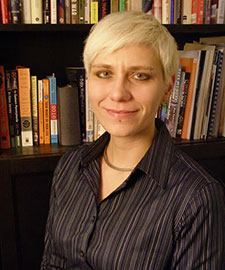
I wouldn’t call my first week as PGN editor smooth. The vacancy was abrupt, and there was no time to prepare. I’d been a writer at the paper for about six months and had only been in the Philly area for a little over a year. In my first week as editor, I had to sort out who was writing what, what stories were coming in, where everything was going to go and fast. The day we went to press — October 25, 2006 — the New Jersey Supreme Court ruled on marriage equality, holding that the state had to provide marriage or its equivalent. That needed to go on the front page, so we quickly wrote the story and laid out the cover anew.
For at least the next year, I worried every week if we would have enough news. Would anything happen? Would it be front-page worthy? Eventually, I learned that, yes, there were always stories if you looked for them, if you listened to the community, if you asked people about their lives. As editor, I tried to pay attention to the stories that would impact the community and to elevate voices that had been marginalized.
One of the lessons I took to heart at the paper — imbuing it in our coverage and carrying it with me in subsequent positions — was that the LGBTQ community was fighting for equality, nothing more, nothing less. Framing our coverage that way helped me to focus on the inequalities and think about how PGN, as Philly’s LGBTQ newspaper, covered stories.
When we covered an issue — nondiscrimination laws, marriage equality, the Boy Scouts, LGBTQ youth homelessness and more — we looked at the connection to the LGBTQ community. Did it have a disparate impact? Was there an explicit or implicit injustice? Did we have a different angle that the mainstream news didn’t include or overlooked? Did we have a responsibility to tell a story and tell it right?
Another lesson from the paper was how to recognize when diverse voices were missing, learn why, and work to build relationships to do better. Part of that was making sure that the community could see itself reflected in PGN’s pages, both as subjects and writers. Were we covering events in the Black and Latinx communities? Did we have photos of women? Was our coverage of the trans community broader than just stories about violence? Was the bisexual community visible? What about deaf and disabled LGBTQ people? We didn’t always succeed, but I believe we improved and expanded.
I also tried to make sure the paper served as a mechanism for the community to have important conversations, both internally amongst ourselves and externally with the larger community. Including differing opinions, perspectives and ideas made our coverage richer. To be sure, the LGBTQ community is not a homogenous group with a singular perspective and approach, and the community doesn’t necessarily agree on what the most pressing problems are or what the solutions should be. But it’s important to value and include different perspectives, and it’s important to make sure people have a seat at the table when decisions are made that affect them.
On a more personal level, being editor of PGN changed my personal trajectory in myriad ways. I appreciated that I could bring my full self to work — queer, tattoos, piercings, colored hair — and the cutest dog ever, Skylos. Being editor of PGN helped me to see the impact of laws and policies that can shape individual lives, family units and whole communities. It helped me to not accept inequality just because it’s the status quo. And it taught me that I was more than justified in having a bias — that the LGBTQ community deserves full equality and nothing less. Our fight has not gotten any easier, but I do think we have more people fighting for us now.
Jen Colletta (Editor, 2012 to 2018)

During my 10 years with PGN, we covered a lot of bad news: murders, restrictive laws, business closures, scandals within LGBTQ community organizations. But throughout my tenure, there was one recurring storyline that ultimately had a happy ending — and it defined how I remember the rollercoaster of emotions and nail-biting excitement of working for the nation’s foremost LGBTQ media outlet.
When I started at PGN in 2007 as a staff writer, only one state in the nation sanctioned marriage equality: Massachusetts. By the time I left a decade later as editor, marriage equality was the law of the land. And as part of the writing team at PGN, I got the privilege of tracing that journey.
Early on, I remember writing front-page stories every time a state would adopt marriage equality through the legislature or the legal system, many of which would come down on the dreaded Wednesday press day, prompting us to throw out layouts and write in a crunch. We got skilled at analyzing legalese and crafted chart after chart of color-coded state laws that had to be re-colored frequently.
As the years went on, those headlines were pushed below the fold and eventually off the front page, as marriage equality gradually became the norm and its eventual likelihood of nationwide success became clearer. We knew it would only be a matter of time until Pennsylvania’s turn came. There were scores of legal cases that sought to advance marriage equality in the Keystone State, but one kept emerging as the strongest: Whitewood v. Wolf.
As the case wended its way through the court system, the writing team at PGN got the chance to know the two-dozen litigants, sharing their personal stories of love and loss. I remember laughing as I interviewed one couple and heard the lighthearted banter they shared, reminding me of my future wife and myself, and I remember fighting tears as another shared memories of her late partner.
Finally, on May 19, 2014, we got an alert that the judge in the Whitewood case was handing down his case the next day; I sent out the red flag to the PGN team and got the early train to be at the office at the crack of dawn the next day. We wrote a number of different stories ahead of time — one a victory tale, another one of defeat and a third predicting a mixed bag — and had everything loaded into the back end of our website, ready to hit publish. The whole staff continually hit the “refresh” button on our browsers until the filing was posted — and then it was speed reading, posting stories and celebrating. For me, it felt like the apex of a thriller movie — for seven years at that point, I’d gotten to interview countless individuals in Pennsylvania and beyond who had been marginalized by their deprivation of legal status. While the law changed in just an instant, we all could feel the history behind it — and ahead of it.
I nearly ran up to City Hall with our staff writer to cover the impromptu celebration and, while we snapped photos and did interviews, we were there just as much to experience the moment. This was a community that we had been enmeshed in. We saw the same people taking the mic, waving the flags and hugging their friends that we saw at community meetings, out in the gayborhood, and at hearings and trials for cases we covered. As staffers for the community’s newspaper, we had gotten to know just about every face in that crowd at one time or another, and seeing them all celebrating this moment together reinforced that this was a win driven and felt by the entire community.
A few days later, we invested an entire morning at City Hall, where we’d spent many a day covering press conferences and formal events — but this time it was a mass wedding of the first same-sex couples to marry legally in Philadelphia. We scribbled the names of couples on our notepads, tried to get good lighting for iPhone wedding shots and passed around tissues as they all said, “I do.” And then it was back to the office to upload photos and share their stories.
That’s how it went about a year later, when the U.S. Supreme Court dealt the final blow to marriage inequality: pre-writing, a minute of heart-pounding waiting as the decision downloaded, shouting echoing throughout PGN’s several floors, interviews at the National Constitution Center where revelers had gathered and then right back to the office to share coverage with our readers.
PGN was a fascinating place from which to watch history unfold, as we had the privilege of being right in the middle of the action, all with the hindsight of how momentous this time really was — largely informed by the paper’s then-nearly 40-year history of covering the community’s evolution.
Personally, I’m so grateful to have been able to witness these milestones amid a team of people who appreciated their enormity. My wife often looks back on the days marriage equality came to Pennsylvania and the U.S. with a bit of sadness as she celebrated by herself at work, where few of her co-workers knew what the occasions really meant.
These were also prime opportunities for me to learn just why I love community journalism: the entrenchment in the community that allows journalists to truly connect to their stories, the adrenaline rush when you know a big moment is about to happen and the satisfaction derived from inviting readers into an experience you know will go down in history.
Giving readers a front-row seat to the moments — good and bad — that have shaped our community’s history has been PGN’s legacy, now for 45 years. The honesty, integrity and professionalism that continue to be at the publication’s core will doubtlessly propel that work forward for many years to come.
Jess Bryant (Editor, 2019 to 2020)
Editor-in-chief for Philadelphia Gay News was the most important title I’ve held in my career. Reporting on and for the LGBTQIA+ community was a privilege and an honor. Being responsible for creating a space where all members of our community are heard is a challenging but necessary and fulfilling task. Other outlets in Philadelphia do not give enough space to what the queer community faces, particularly at the intersections of race, class, gender, immigrant status and disability. Philadelphia’s major outlets do not take time to form relationships with our community members and organizations, and often their reporters do not intimately understand the violence our community faces nor the resilience we exhibit daily. There is not another beat I would have rather covered than that of the diverse and expansive LGBTQIA+ community.
The time I spent at PGN was invaluable. As much as I attempted to inform the public, I was also educated by people I met along the way, like residents at the John C. Anderson Apartments, the staff at William Way, Action Wellness, Philadelphia FIGHT and Bebashi, and community activists from ACT-UP and other grassroots efforts, among others. When the COVID pandemic began, I was proud but not surprised at how quickly the LGBTQIA+ community organized to provide food, mutual aid, and COVID testing to the most vulnerable of our queer siblings. Bread & Roses Community Fund formed the Solidarity Fund for COVID-19, and by April 17 they were distributing money to grassroots organizations around the city who were working tirelessly to ensure people were as safe as possible. PGN was reporting as quickly as possible to answer the questions our community asked, like the risks of being HIV-positive, where to be tested and find aid, and the latest safety measures.
We haven’t reached the finish line of the pandemic yet, but we are near, and once again the LGBTQIA+ community showed not only our resilience, but also our empathy, compassion and understanding.
Reporting on and for the queer community means covering entire lives — celebrations and devastations. The Pride issue is always PGN’s largest issue, often surpassing 100 pages. Along with current news, most of the stories are celebratory or historical. But in any given year, easily over 100 pages are dedicated to our grief — from losing integral community members, to violence against trans women to our youth’s very high death by suicide rate. Both a common understanding of the reasons we celebrate when we can and shared grief are the reasons we so often call one another “family.”
At PGN, I found an extended family in Philadelphia, and while my tenure at the paper is over, my familial relationships continue.
GUEST COMMENTARY
Volume 23
Issue 2

